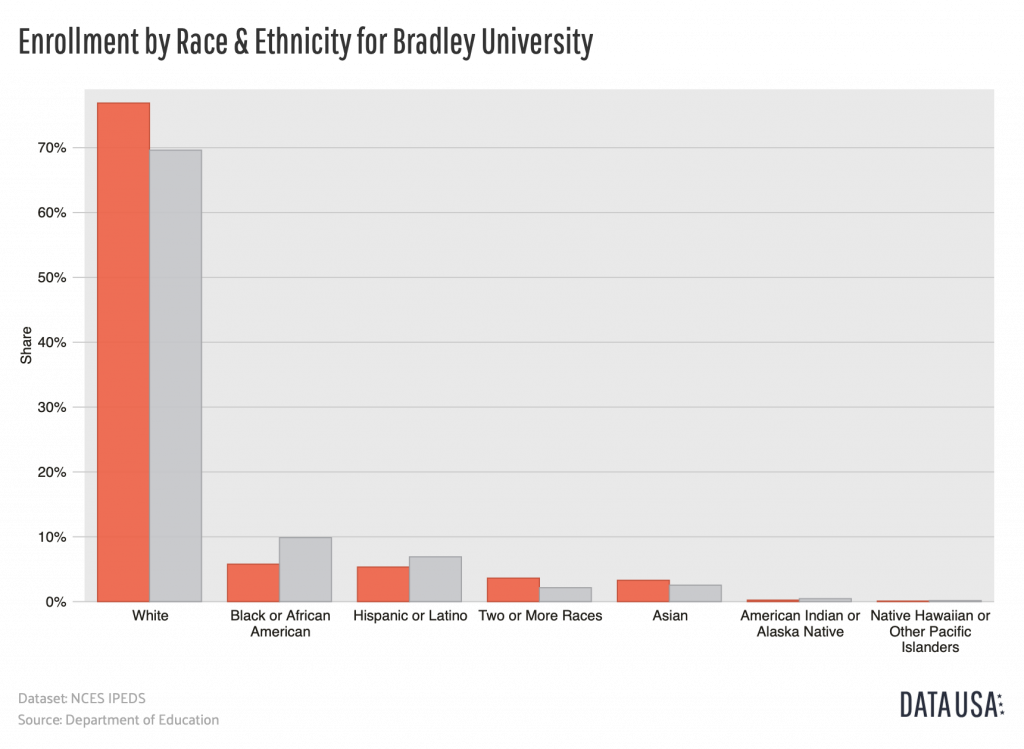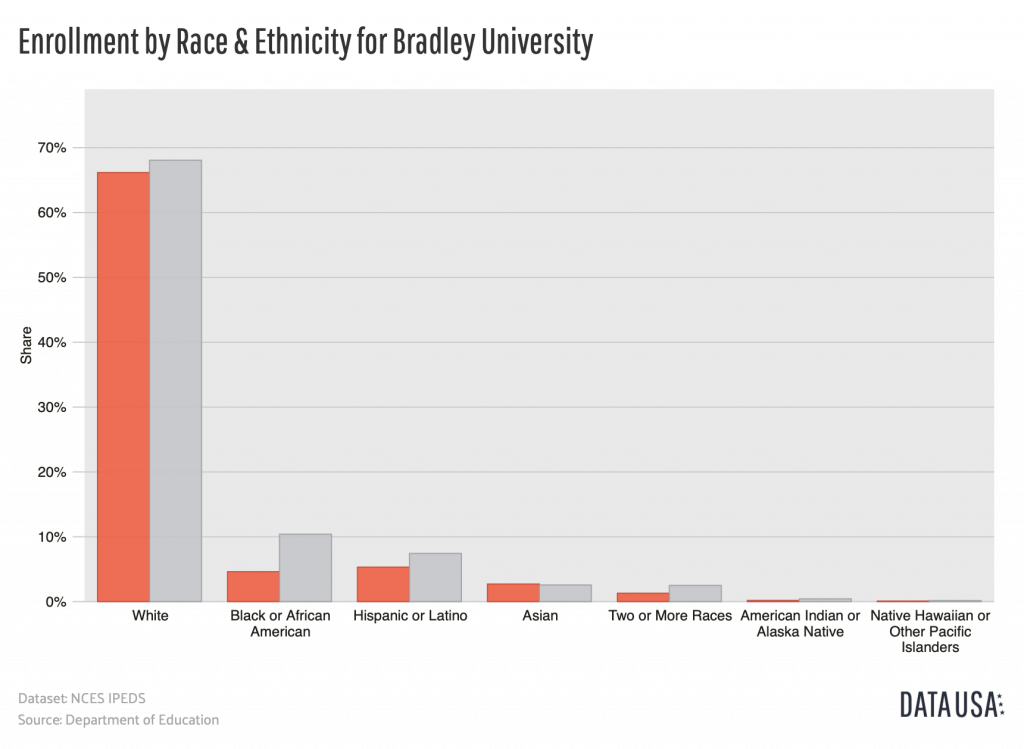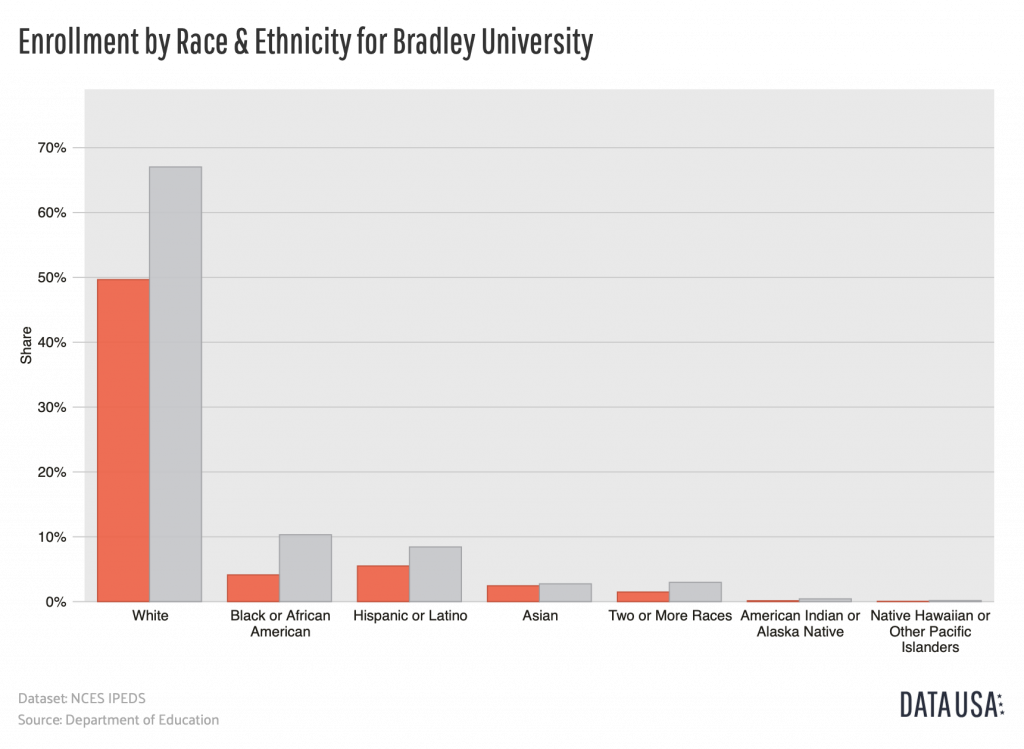Written by Kayla Johnson and Quenice Williams
Bradley University. Home of the Braves. This mid-size university is home to over 5,400 students and loves showcasing just how diverse they are. Online that is. Once you step foot on campus, it’s another story.
The Office of Diversity and Inclusion hosts the majority of organizations for the minorities on campus. These organizations include members of the NPHC, Black Student Alliance (BSA), Asian American Association (AAA), Association of Latin American Students (ALAS), Indian Student Association, etc. Yes, there is diversity on campus, but not as much as it seems when reading or hearing about it.
Bradley’s Registrar’s office keeps a record of all the students attending Bradley and based on data from their statistical profile for 2018, it stated of the 5,400 students on campus, 4,606 of them are undergraduates. 153 were Asian, 317 were Black, 3,287 were Caucasian, 477 were Hispanic, and as for Native American or Alaskan and Pacific Islander had a sum of 10 or less.

Even with these high enrollment rates, it’s steadily decreasing despite the highest incoming freshman class in 2017. In an article from The Scout, they spoke on Bradley President, Gary Roberts’, response to decreasing rates.

2012 
2013 
2014 
2015 
2016
The African American population on campus is the second largest minority community on campus, yet it doesn’t seem like it. Sophomore Lauryn Simms said, “I’m truly surprised that there’s over 300 black students because it doesn’t seem like. Ever.”
For the African American community they can come to the weekly BSA meetings to be apart of their community. The president, Charlie Myers said, “The sole purpose of BSA is to provide an environment for the African American Students on campus to feel safe, loved, and appreciated. BSA is also a place where students can also communicate and speak freely as they may feel its more difficult to express themselves within the Bradley Community.”
As for the population, Myers said, “I think the number of Black students we have on campus is fine, we just need to be provided the same resources as other students on campus, and see people in administration, faculty, and staff that look more like us.”
Myers reasoning behind the statement was because black students are not given the same resources as other students and when they are, it’s something they had a say in rather than what they want to do.
Many other students of color said they’d feel more comfortable on campus and in their classes if there were more professors of color. Sophomore Kayla Hicks said, “I get that it’s a PWI, but that doesn’t mean the only people who work here have to be white. The only black people I see who work here are one or two professors and those who work in the student center.”
Similar to what Myers said, several members of the Association of Latin American Students or ALAS believe that they’re fine with the amount of latinos on campus but the different is they want to feel more united with the minorities on campus and the rest of the school.
In the ALAS organization, they have meetings regarding the Latino community and they host events including fundraisers to share their culture.
The Garrett Center is the hub for culture. It’s is the place where they have most of their events. It’s where they push to spread unity for everyone here on campus. For some people it’s much more than a place.
Andrea Hernandez, a member of ALAS said, “ODI gave me that sense of family. A space where I belong and get to know other people from different backgrounds and ethnicities.”